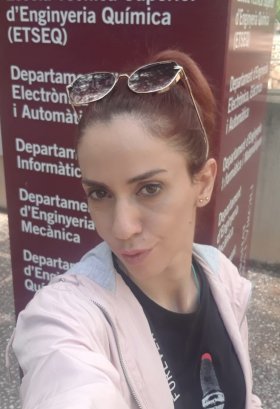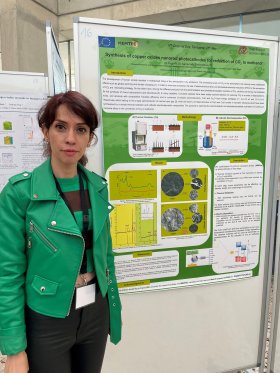Tahereh Mokary Yazdely


PhD Programme: Nanoscience, Materials and Chemical Engineering
Research group: MEMTEC – Materials, Membrane and Encapsulation Technology
Supervisor: Alberto Puga Vaca
Bio
Tahereh Mokary Yazdely holds a Bachelor's Degree in Pure Chemistry at Zanjan University (2008) and master's degree in Inorganic chemistry at the Institute for Advanced Studies in Basic Sciences (IASBS), in Iran (2013). Her topic that she studied in Master is evaluation of catalytic activities of Iron porphyrins in homogenous form in the oxidation Olefins. After graduation she published some articles in Journal of Molecular Catalysis A, Macroheterocycles and New Journal of Chemistry. After that she collaborate with one of institutes at Zanjan University in field of Hydrogel, Organogel and Carbogel and she could published some articles in these area in Desalination and Water Treatment, Journal of Spectroscopy and Applied Organometallic Chemistry. I interested in different application in biochemistry and industrial topic related to my scientific experiments, also some topic about porous material have been attracted my attention to themselves.
Project: Light-driven transformation of carbon dioxide into fuels and chemicals through light
The main motivation of this project is the utilisation and storage of sunlight via photo(electro)catalysis to transform carbon dioxide under mild conditions of temperature and pressure into versatile energetic chemicals (fuels) such as formic acid or methanol, able to be stored for a virtually unlimited time. Inspired in natural photosynthesis, which relies on impressively precise and sophisticated biomolecular mechanisms to channel the necessary energy and atom transfer processes, this project proposes to employ recyclable chemical species to assist as electron donors in the photoreduction of CO2, and to explore favourable photocatalytic or photoelectrocatalytic systems for the production of carbon-based fuels such as formic acid or methanol. Photoelectrocatalytic experiments will be designed and performed, aiming at enhancing CO2 reduction efficiency. Photoelectrodes (photocathodes) based on Earth-abundant elements, chiefly copper, zinc or iron, will be systematically prepared and tested. Once the best performing materials will be identified, photoelectrochemical cells for full-process CO2 reduction will be constructed using state-of-the-art anodes for the concomitant conversion of electron donors. Ultimately, in order to assess the possibility of wireless operation without the need for external electricity, photocatalytic experiments will be also carried out.



